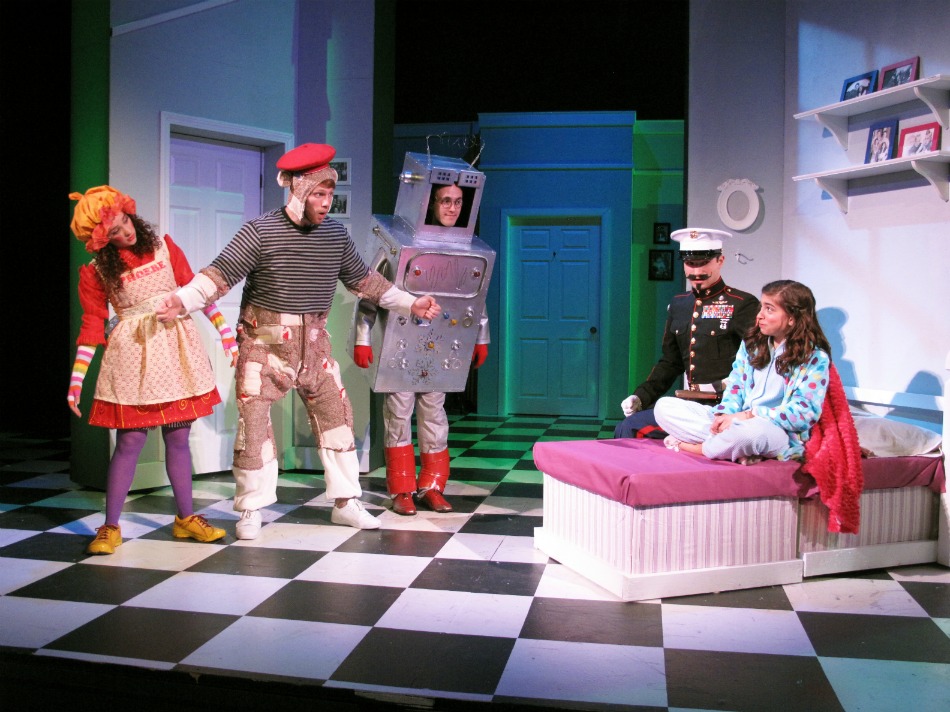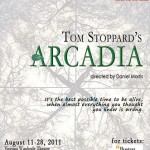
Toys standing on left (L-R): Alycia Sacco (as doll Phoebe), Grant MacDermott (as Monkey), Nick Sulfaro (as Hugo); Seated on right (L-R): Danny Bryck (as Fritz), Sirena Abalian (as Clara). Stoneham Theatre's "The Nutcracker" is directed by Caitlin Lowans. All photographs taken by Carla Donaghey.
The Nutcracker as imagined The House Theatre of Chicago, based on the story by E.T.A. Hoffman, book by Phillip Klapperich and Jake Minton, music by Kevin O’Donnell, lyrics by Jake Minton, Stoneham Theatre, 11/25/11-12/22/11, http://www.stonehamtheatre.org/holidayshows2011.html.
Reviewed by Gillian Daniels
(Stoneham, MA) With a contemporary setting and opening scenes that take place at a Christmas party, Stoneham Theatre’s production of “The Nutcracker” promises to be a modern update of the classic E.T.A. Hoffman children’s book and eventual ballet by Tchaikovsky. A sudden chill interrupts the family scene when it’s announced that Fritz (Danny Bryck), the older brother of Clara (Sirena Abalian), has died while serving in the military.
In the fallout of this tonal shift, the party guests dispose of the Christmas tree like pallbearers taking away a coffin. The core members of the family, including parents Meagan Hawkes and Mark Linehan, continue to grieve. From there, the original story is used as a springboard for Clara to deal with the loss of her brother. Continue reading
